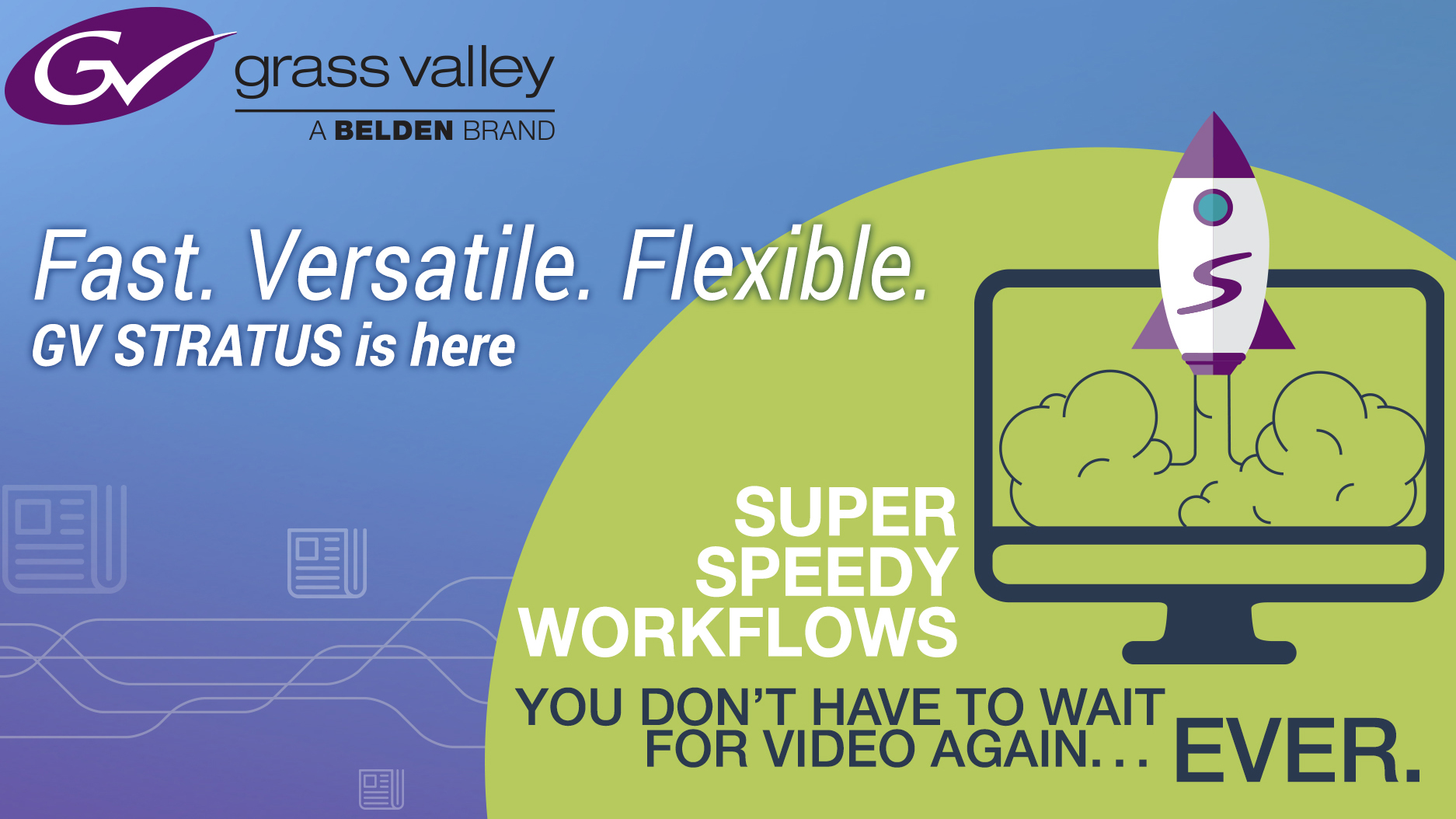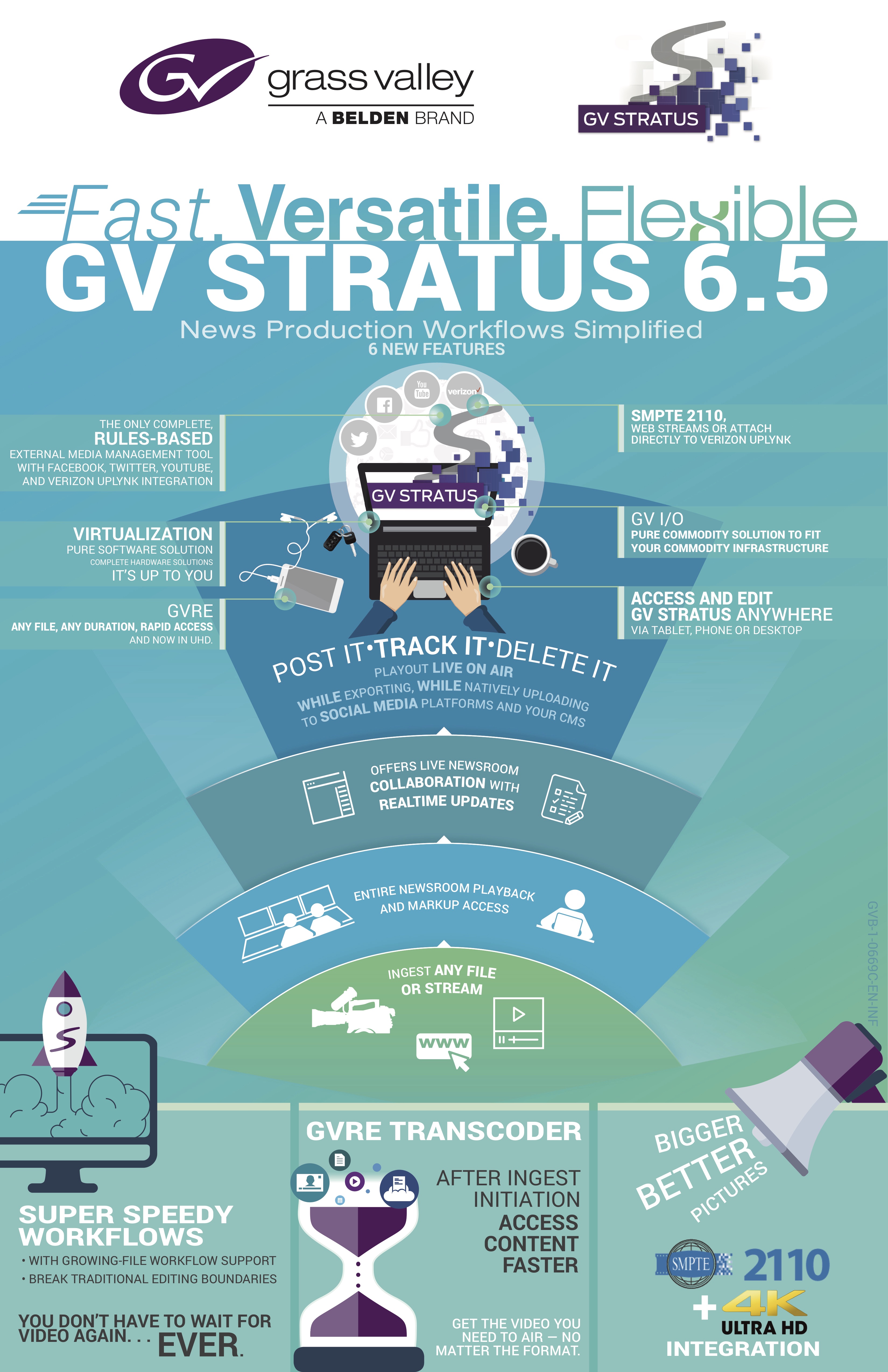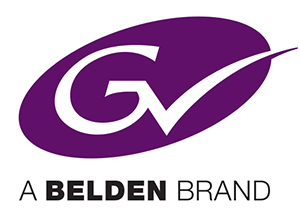Grass Valley: Giving News a More Sociable Face
Content Sponsored by Grass Valley

The ubiquity of mobile devices and the rise of social media have had a big impact on consumer viewing habits—and we are seeing this trickle down into news consumption. More and more viewers are going to social media and the web to find their news content as opposed to television.
This trend is backed up by a study by the Pew Research Center in Q3 2017, which found that 43 percent of Americans said they often get their news via websites, apps and social media, compared to 50 percent who often get news via television (down from 57 percent in 2016).
When Linear Meets Social
As the transition beyond linear takes place, the pressure is on news broadcasters to respond. In addition to addressing their existing market, they must also meet the needs of younger viewers who prefer to access content via a range of platforms from on-demand to social media. Broadcasters are faced with the problem that they cannot choose between linear and digital output—they have to deliver both. Added to this, in breaking news situations, live (linear) news is still the preferred medium for the majority of viewers—regardless of demographic—so linear is far from dead (the same is true with sports).
The big challenge is that the majority of news broadcasters have workflows that were not designed for social media; they were designed for presenting the news in a linear fashion. Additionally, many of these workflows cannot be easily adapted to the changing news consumption habits of viewers.
It is not enough for broadcasters to deliver content via a range of platforms—just pushing stories to reach those platforms' members; they also need to manage that content accordingly. Usually, this means adding complexity to their workflows, with additional silos for different applications. There are newsrooms where you can see anywhere from 15 to 30 different applications in use to manage output to online and social platforms.
Get the TV Tech Newsletter
The professional video industry's #1 source for news, trends and product and tech information. Sign up below.
The added complexity these additional applications bring is more than a little counterintuitive to the fast pace of a newsroom environment. Content often has to be separately uploaded to different platforms, to different Twitter, Facebook and YouTube accounts, and then managed. All of this costs time and impacts the efficiency with which a newsroom operates.
Creating Efficient Social Media Integration
What broadcasters need is to be able to seamlessly integrate social media management into their daily media management cycle, taking the number of applications needed to achieve this down to just one. By simplifying their workflows, each station is able to push the stories that are right for its viewers out in a variety of ways.
This is what Grass Valley helps them do with new solutions within the GV STRATUS production and content management system. As well as supporting linear content output, it now delivers powerful social media management capabilities.

Users can now post, track and delete any asset with a single click. Producers can pre-determine who can post content and within what parameters, while a new rules engine allows them to automate content delivery and management for social media and CMS. Content can easily be tracked and then deleted from all platforms when appropriate. Broadcasters can also use the new capabilities to maximize the value of popular content—for example, by automatically re-posting to other social media accounts without having to individually log in to multiple accounts or running the story as the lead item on the website.
With seamless integration and management of social and digital content output, broadcasters can keep delivering news in the linear manner that traditional audiences favor, but can also attract and engage younger viewers. By ensuring multiple engagements with their brand across a range of platforms they can build better relationships with consumers who access content digitally.
Less (Complexity) Is Always More
Reducing complexity has benefits far beyond allowing broadcasters to reach new audiences. Grass Valley has been re-tooling and re-designing solutions like our Ignite news production automation solution to address complexity within newsroom workflows. Ignite can now be paired with the compact Kula production switcher for smaller web-based and mobile production control rooms, which can be used to generate on-demand live weather and news updates/inserts.
Allowing reporters in the field to edit content anywhere with an internet connection using a laptop, phone or tablet saves valuable time and allows stories to be turned around more rapidly. Thanks to the additional integration of editing and post-production tools such as Rio, EDIUS and Go! they can do just that. Using the Ignite ASP, journalists can also do live inserts from anywhere using a tablet-based UI.

What Grass Valley is doing is giving our newsroom applications a greater degree of flexibility and scalability so that they can be deployed for large newsroom operations, but also smaller online and web-based control rooms.
The combined portfolio of Grass Valley and SAM solutions, together with significant investment from Belden, gives broadcast professionals the broadest selection of tools and technologies in the industry. By delivering real world solutions that reduce complexity, regardless of where content is being delivered, we are enabling our news customers to conquer today's news marketplace while giving them the flexibility to respond to future demands.
—Chuck Garfield, Director News Products, Grass Valley
To learn more about Grass Valley's news solutions, visit www.grassvalley.com.
This content is sponsored by Grass Valley.

